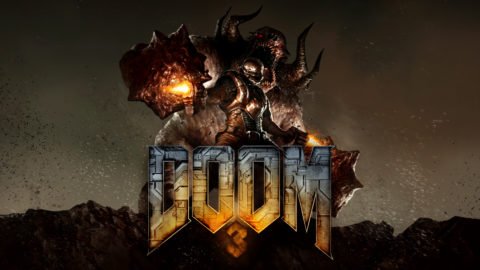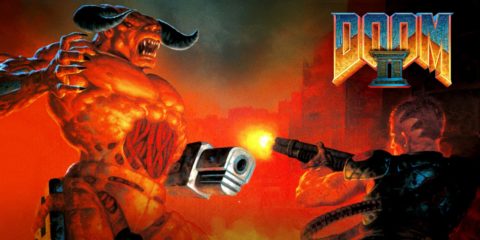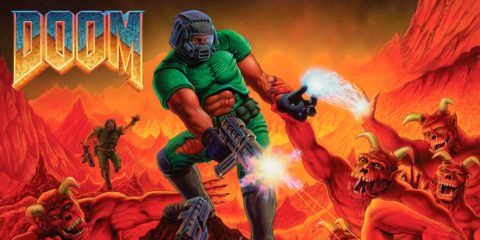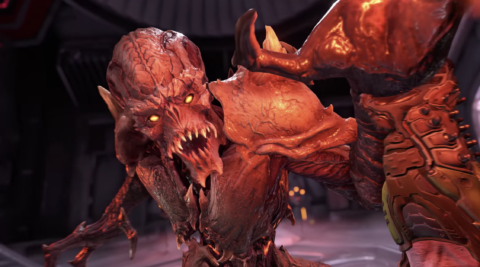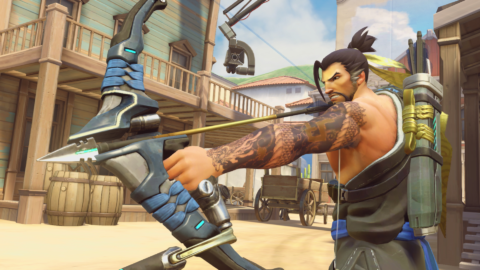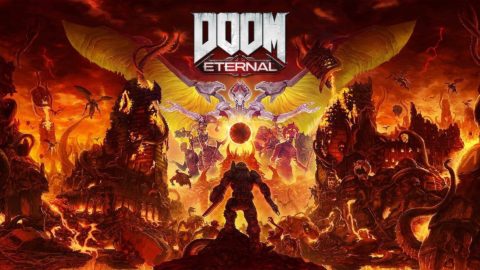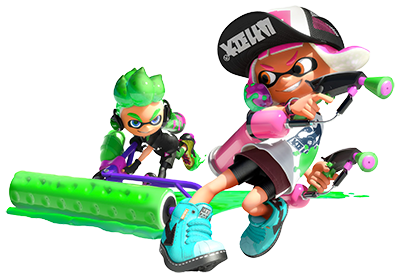MachineGames and Arkane Studios have teamed up to develop a cooperative multiplayer title in Wolfenstein: Youngblood. A title that sets itself apart from previous entries by focusing more on quests and a traditional upgrade system rather than elements characteristic of the rebooted Wolfenstein series. With Panic Button at the helm of the porting process once again, I had no worries about playing their latest entry on Switch. Despite their efforts, Youngblood suffers from performance and visual issues that prevent players from fully immersing themselves in the experience. An experience that is ultimately repetitive and generic, but is otherwise enjoyable when playing with a friend.
Before The Rain Comes
Wolfenstein: Youngblood takes place nearly two decades after the events of Wolfenstein II: The New Colossus. In that time, the Nazis have lost control of the United States and most of the world. Even though they’re not as powerful as they once were, their existence continues to pose a grave threat to humanity. During this same period, B.J. Blazkowicz and Anya Oliwa have become parents to twin daughters: Sophia and Jessica. As parents, they have prepared the Blazkowicz sisters for the harsh reality of the world they were born into. By teaching them how to protect and care for themselves, Soph and Jess are more than ready to take on the Nazis and save their father.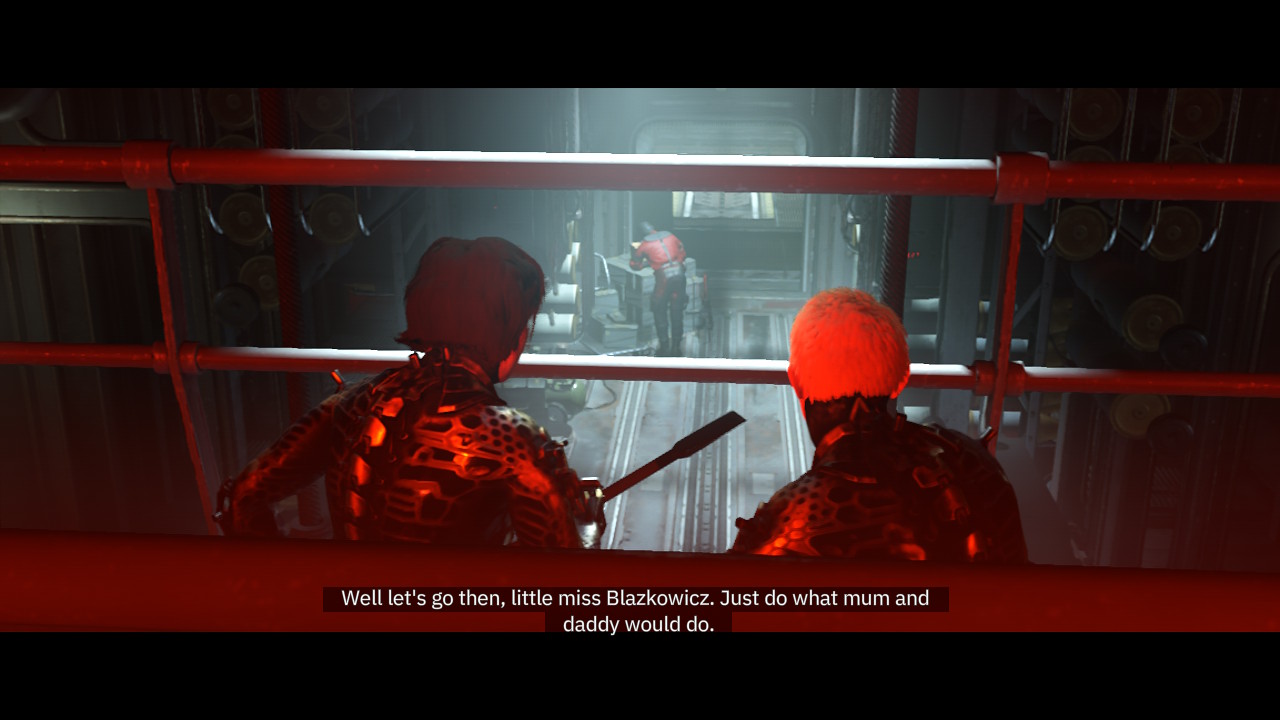 In Youngblood, the story takes a back seat to the gameplay. Wolfenstein II made a huge effort to help the player understand the severity of the Nazi threat through extensive dialogue and cutscenes. Youngblood fails to make it feel like what you’re doing matters any more than any other first person shooter. It never truly feels like B.J.’s life is in danger or that the Nazi occupation of Paris is as big of a deal as its supposed to be. There was a palpable tension and motivation to eliminate Nazis occupying America in Wolfenstein II because the writing conveyed the sheer horrifying extent of Nazi atrocities and how they affected the characters. I understand that this is a spinoff title and its main focus is on cooperative multiplayer more than anything else, but the narrative is what differentiates the rebooted Wolfenstein series from other first person shooters. The narrative’s understated role in Youngblood feels like a missed opportunity to elevate the experience, even a cooperative one, to a more meaningful level.
In Youngblood, the story takes a back seat to the gameplay. Wolfenstein II made a huge effort to help the player understand the severity of the Nazi threat through extensive dialogue and cutscenes. Youngblood fails to make it feel like what you’re doing matters any more than any other first person shooter. It never truly feels like B.J.’s life is in danger or that the Nazi occupation of Paris is as big of a deal as its supposed to be. There was a palpable tension and motivation to eliminate Nazis occupying America in Wolfenstein II because the writing conveyed the sheer horrifying extent of Nazi atrocities and how they affected the characters. I understand that this is a spinoff title and its main focus is on cooperative multiplayer more than anything else, but the narrative is what differentiates the rebooted Wolfenstein series from other first person shooters. The narrative’s understated role in Youngblood feels like a missed opportunity to elevate the experience, even a cooperative one, to a more meaningful level.
Time for Arthur & Kenneth
As the main characters of Youngblood, Soph and Jess take center stage in an incredibly endearing and delightful fashion. The relationship between Soph and Jess shines through in a way that feels genuine. It’s honestly one of the most enjoyable parts of the game. I loved hearing Jess and Soph support and tease each other throughout the entire experience. Inspired by their favorite fictional duo, “Arthur and Kenneth,” Soph and Jess are eager to jump into adventure and save their father. You’ll hear Soph sing her sister’s praises as Jess shoots heads off Nazis just as much as you’ll hear Jess and Soph give each other supporting call outs on the battlefield. They clearly love each other and their father, and you can’t help but root for their success whenever they talk about saving “daddy.” 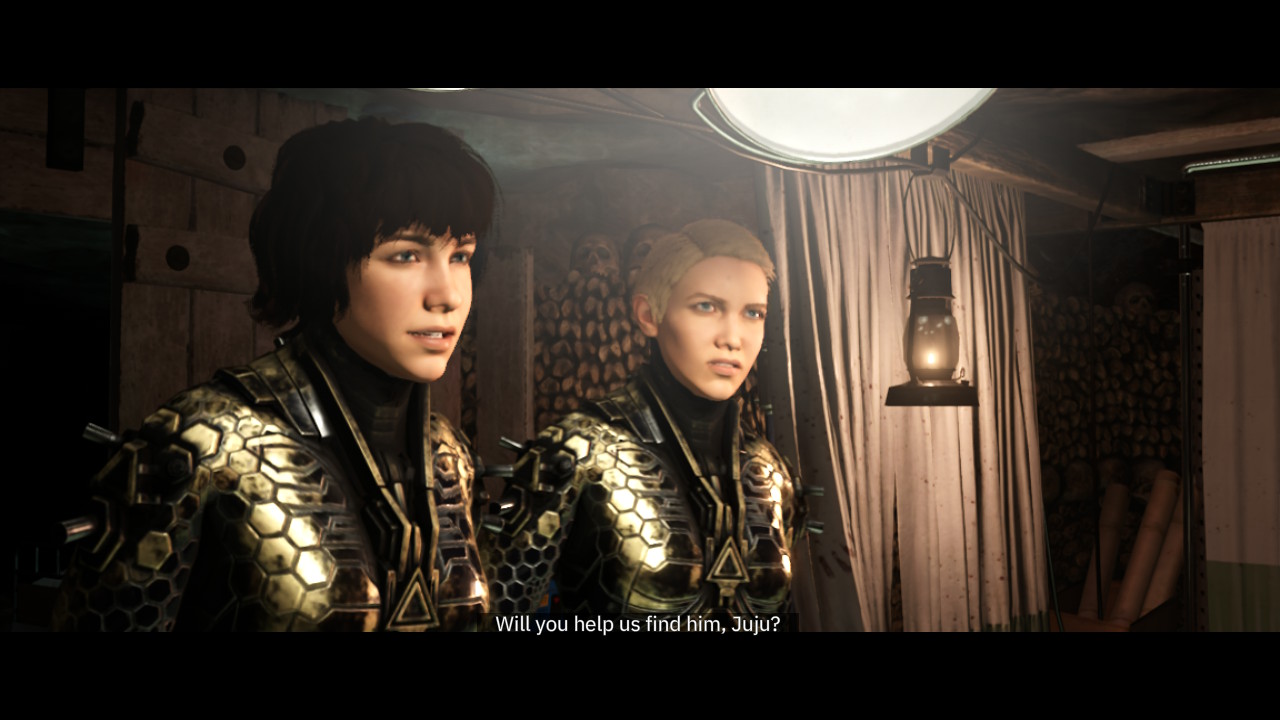 At some points, Soph and Jess express sadness for their situation. As much fun as they’re having killing Nazis, they’re clearly not experiencing a life where they get to be the people they dreamed of being. These moments, along with all the other fun ones, help Soph and Jess develop into fully realized characters. I enjoyed my time killing Nazis with them, and look forward to seeing their roles grow in future Wolfenstein titles.
At some points, Soph and Jess express sadness for their situation. As much fun as they’re having killing Nazis, they’re clearly not experiencing a life where they get to be the people they dreamed of being. These moments, along with all the other fun ones, help Soph and Jess develop into fully realized characters. I enjoyed my time killing Nazis with them, and look forward to seeing their roles grow in future Wolfenstein titles.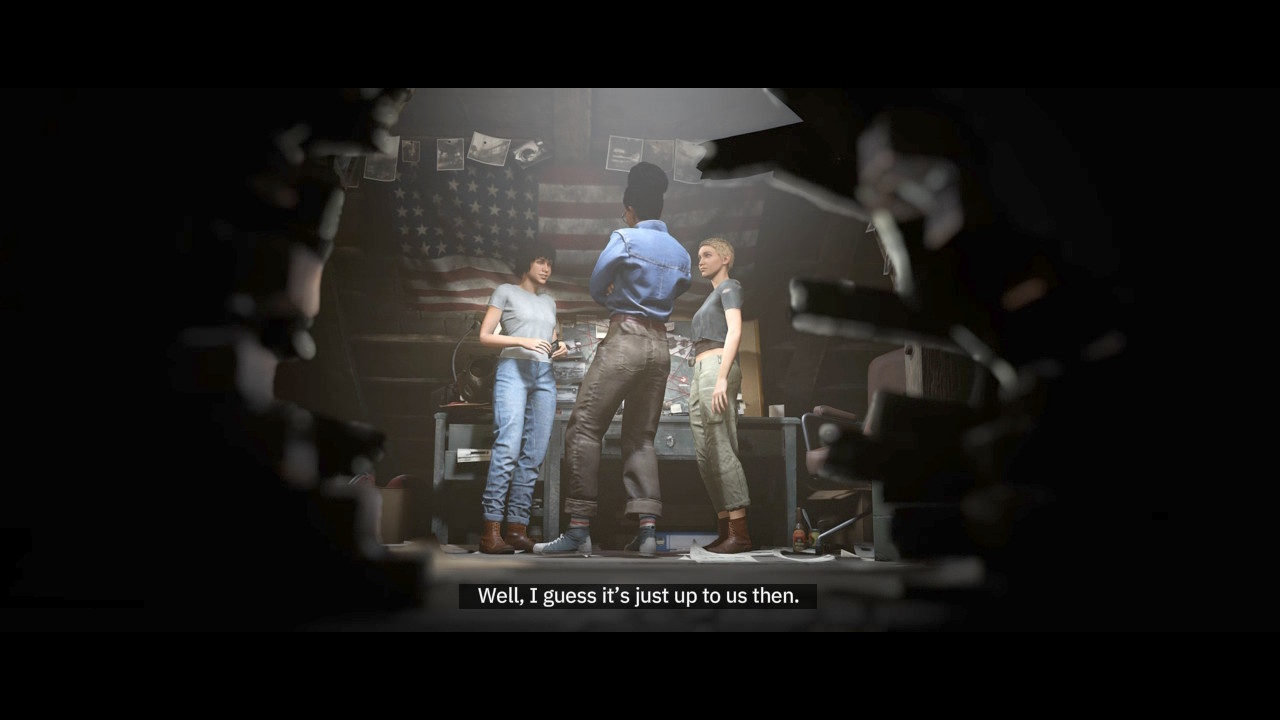 There isn’t much to say about the rest of the characters, however. Abby doesn’t get much of a chance to shine like other characters did in Wolfenstein II. Characters in the safehouse of the French catacombs are mostly irrelevant NPCs that exist only to give you side quests. The leaders of the French resistance are a little more interesting and play an important role in the light narrative, but aren’t that memorable in the long run.
There isn’t much to say about the rest of the characters, however. Abby doesn’t get much of a chance to shine like other characters did in Wolfenstein II. Characters in the safehouse of the French catacombs are mostly irrelevant NPCs that exist only to give you side quests. The leaders of the French resistance are a little more interesting and play an important role in the light narrative, but aren’t that memorable in the long run.
Neu-Paris and Little Berlin
Wolfenstein: Youngblood takes place entirely in Nazi-occupied Paris, France. It’s always uncomfortable to see the sunny streets of France draped in the oppressive red, white, and black flags and swastikas of the Fourth Reich. Large, Orwellian Nazi facilities loom over the various regions as a variety of Nazi soldiers patrol the destroyed, apocolyptic streets. The wide environments above ground play their part in making it clear that there was a fight for control here – a fight that the Nazis unfortunately won. If there’s one thing Youngblood does well over its predecessor, it’s providing a variety of open environments that give players a nice change of pace from the standard hallways of corridor shooters. 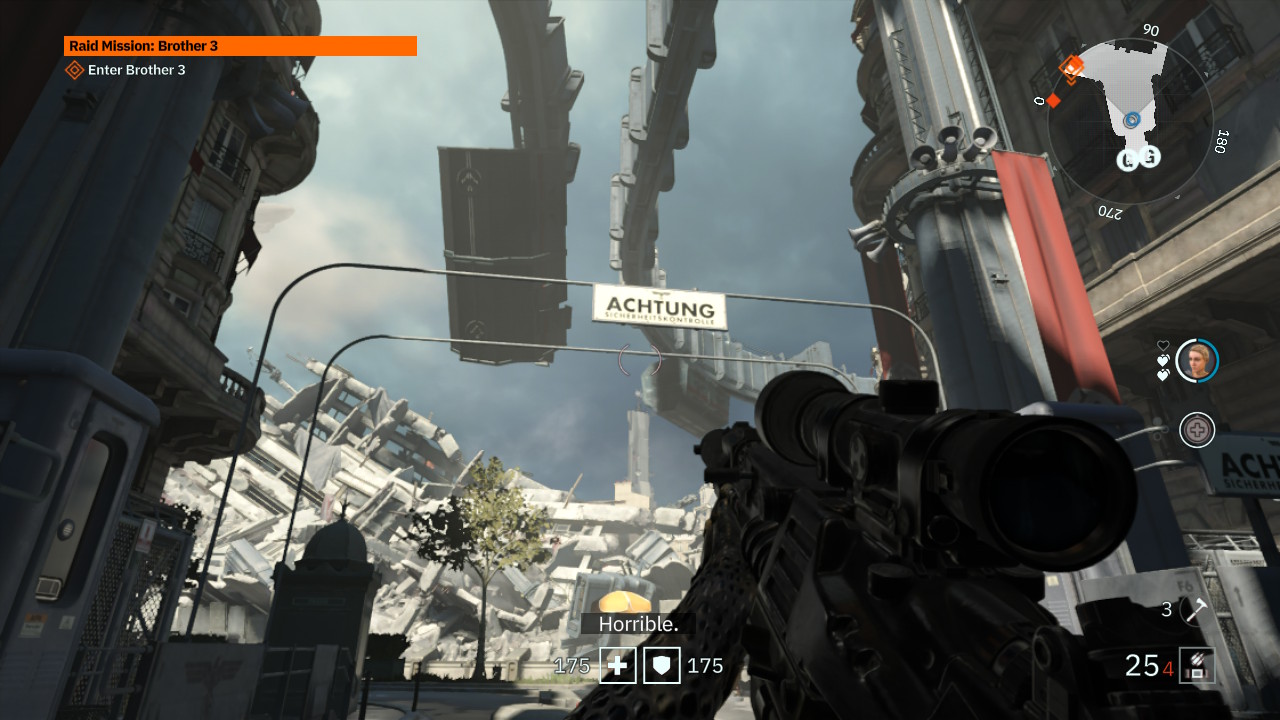 That’s not to say that there aren’t corridor shooter-like environments in Youngblood. The underground areas are a lot less interesting and are mostly played in the dark. Traveling through these sewers and catacombs is mostly unmemorable as they pretty much blend together. The Nazi facilities and buildings where main missions take place are sometimes more interesting to explore than the streets of Paris. They’re characterized by haughty Nazi architecture and vain decorations that are clearly emblematic of a force obsessed with itself. These areas often use simple hallways, but also feature vast hangars, data center-like rooms, and large sprawling office spaces with varying levels of verticality. They’re cool to explore and provide a healthy amount of variety to the gameplay.
That’s not to say that there aren’t corridor shooter-like environments in Youngblood. The underground areas are a lot less interesting and are mostly played in the dark. Traveling through these sewers and catacombs is mostly unmemorable as they pretty much blend together. The Nazi facilities and buildings where main missions take place are sometimes more interesting to explore than the streets of Paris. They’re characterized by haughty Nazi architecture and vain decorations that are clearly emblematic of a force obsessed with itself. These areas often use simple hallways, but also feature vast hangars, data center-like rooms, and large sprawling office spaces with varying levels of verticality. They’re cool to explore and provide a healthy amount of variety to the gameplay.
Brains In My Mouth
Unfortunately, the game does not perform well. Wolfenstein II wasn’t perfect, but it was definitely a lot more smoother and stable than Youngblood is – even at its best moments. I experienced encounters where it felt like the game was running at around 15 frames per second, maybe even less. The game generally feels like its running at less than 30 frames per second, and it simply does not feel good to play. The resolution is also not great. Environments look blurry, textures are low, and the detail isn’t anything to write home about. Honestly, the game can be pretty ugly.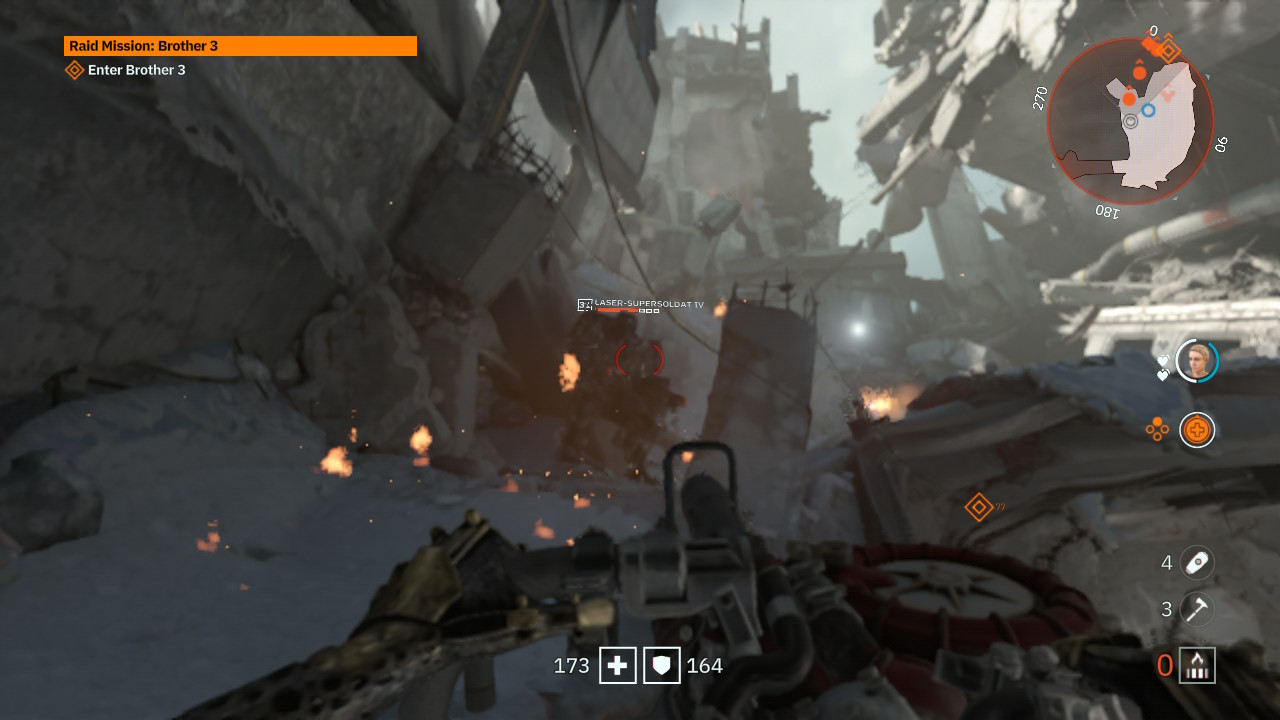 Smooth gunplay is king when it comes to first person shooters and, unfortunately, Wolfenstein: Youngblood on Switch fails to hit that mark. As a result of the performance issues, aiming and shooting enemies feels like a struggle against the unstable framerate. There are moments when the game is stable enough that it feels great to throw hatchets into the backs of Nazis or line up headshots from a distance, but that should be the norm and it simply isn’t.
Smooth gunplay is king when it comes to first person shooters and, unfortunately, Wolfenstein: Youngblood on Switch fails to hit that mark. As a result of the performance issues, aiming and shooting enemies feels like a struggle against the unstable framerate. There are moments when the game is stable enough that it feels great to throw hatchets into the backs of Nazis or line up headshots from a distance, but that should be the norm and it simply isn’t.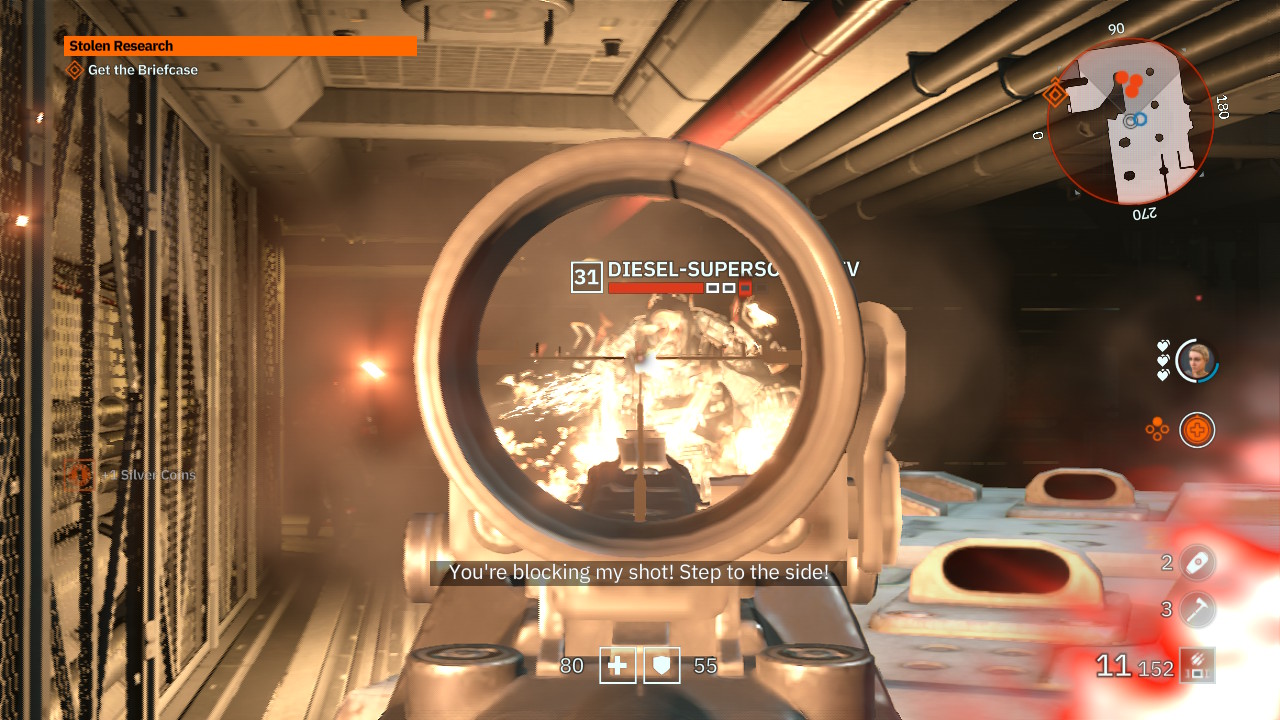 It’s the reality of the fact that the Switch’s hardware is not all that powerful. The Switch ports of Wolfenstein II and DOOM (2016) feel smooth and look sharp more often than not, but they’ve also had the benefit of being updated since their release. Hopefully, with time, Panic Button can improve the experience in an update.
It’s the reality of the fact that the Switch’s hardware is not all that powerful. The Switch ports of Wolfenstein II and DOOM (2016) feel smooth and look sharp more often than not, but they’ve also had the benefit of being updated since their release. Hopefully, with time, Panic Button can improve the experience in an update.
You’re a Bad-ass, Jess!
Previous Wolfenstein games granted specific perk upgrades through the accomplishment of relevant actions. For example, killing several enemies stealthily would improve your movement speed when crouched. In Youngblood, players gain XP for almost everything they do in this game, whether it be killing enemies, collecting items, or completing quests and actions. Leveling up and completing quests rewards players with skill tokens they can spend to unlock passive abilities or new powers. This new system, while streamlined and constantly rewarding the player, removes the challenge from accomplishing certain goals. Again, it was something that set Wolfenstein apart from other games that use similar systems.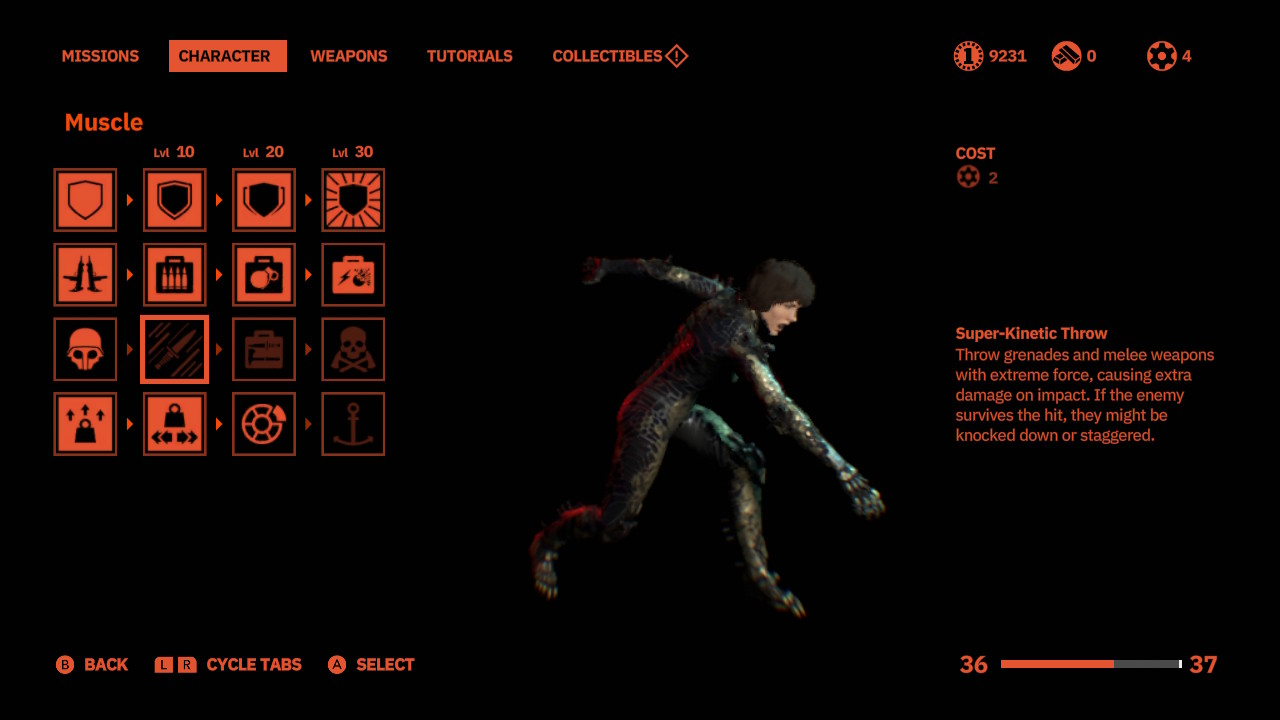 At the beginning of the game, players are asked to choose from two abilities that dynamically affect gameplay. Cloak fits a sneakier playstyle as it allows players to turn invisible, while crush lets players literally run into enemies by giving them the ability to knock them down. Improving these skills yields more powerful returns, and complement each other when playing alongside another player. These abilities are a bunch of fun and are a nice addition to the passive abilities featured in the game.
At the beginning of the game, players are asked to choose from two abilities that dynamically affect gameplay. Cloak fits a sneakier playstyle as it allows players to turn invisible, while crush lets players literally run into enemies by giving them the ability to knock them down. Improving these skills yields more powerful returns, and complement each other when playing alongside another player. These abilities are a bunch of fun and are a nice addition to the passive abilities featured in the game.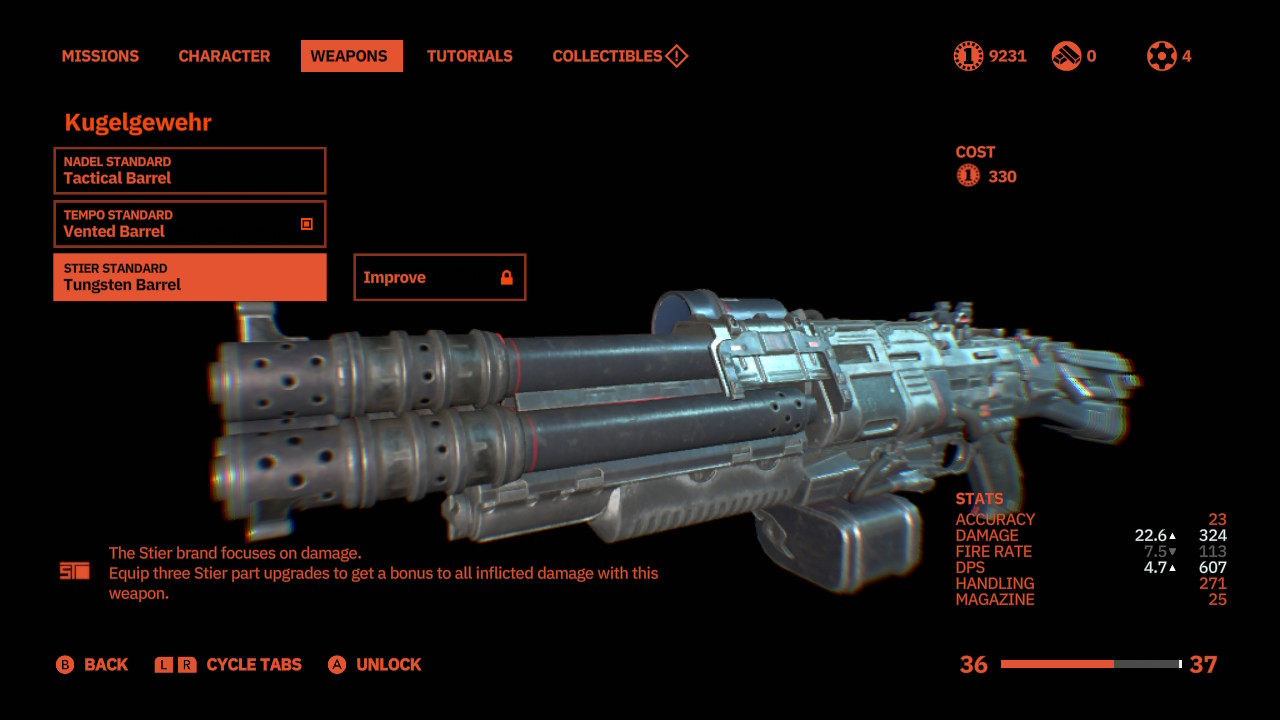 Instead of the upgrade kits from Wolfenstein II, Youngblood allows players to upgrade their weapons with silver coins – an in-game currency earned by completing objectives and collecting them throughout the game. Silver coins can be used to purchase attachments that improve various parts of a weapon. There are three types of every attachment, and each one affects something different like damage output, accuracy, or fire rate. I prefer this system over the upgrade kits because it gives players the freedom to experiment what attachments work best for them. There are moments when it’s best to focus on damage output over accuracy, while there are moments where fire rate makes all the difference. Giving players the ability to change weapon upgrades on the fly allows the game to feel fresh when the gunplay starts to get repetitive.
Instead of the upgrade kits from Wolfenstein II, Youngblood allows players to upgrade their weapons with silver coins – an in-game currency earned by completing objectives and collecting them throughout the game. Silver coins can be used to purchase attachments that improve various parts of a weapon. There are three types of every attachment, and each one affects something different like damage output, accuracy, or fire rate. I prefer this system over the upgrade kits because it gives players the freedom to experiment what attachments work best for them. There are moments when it’s best to focus on damage output over accuracy, while there are moments where fire rate makes all the difference. Giving players the ability to change weapon upgrades on the fly allows the game to feel fresh when the gunplay starts to get repetitive.
You’re Tough as Nails, Soph!
Youngblood combats this repetitive nature through various enemy types. There are so many different types of Nazi enemies with different weapons, tiers, and combat styles that affect the way players approach each engagement. Almost every enemy in this game has armor that needs to be depleted before players can do real damage to them. Each gun specializes in destroying certain types of barriers, encouraging players to learn which guns are best for certain types of enemies. While players can use any gun to defeat any enemy, I think it’s a lot more fun to pick the most effective weapon to defeat a certain enemy type on the fly. 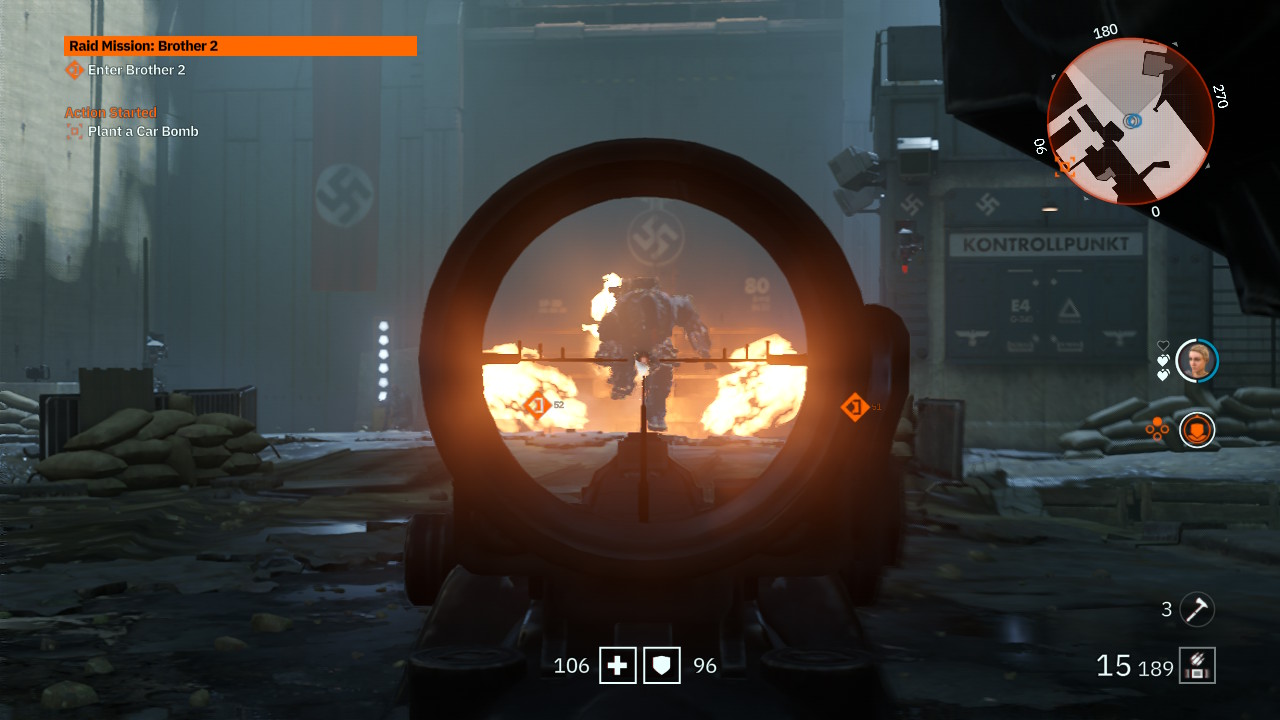 The large, open environments of Youngblood are perfect for the quest system employed by this title. The catacombs serve as a hub for loadout prep and quest selection. Players can select from the quests they’ve unlocked and deploy themselves to whatever region they have discovered throughout their exploration. Even when it comes to the main story missions, players do not have to accomplish them in a linear fashion – it’s all up to them.
The large, open environments of Youngblood are perfect for the quest system employed by this title. The catacombs serve as a hub for loadout prep and quest selection. Players can select from the quests they’ve unlocked and deploy themselves to whatever region they have discovered throughout their exploration. Even when it comes to the main story missions, players do not have to accomplish them in a linear fashion – it’s all up to them. 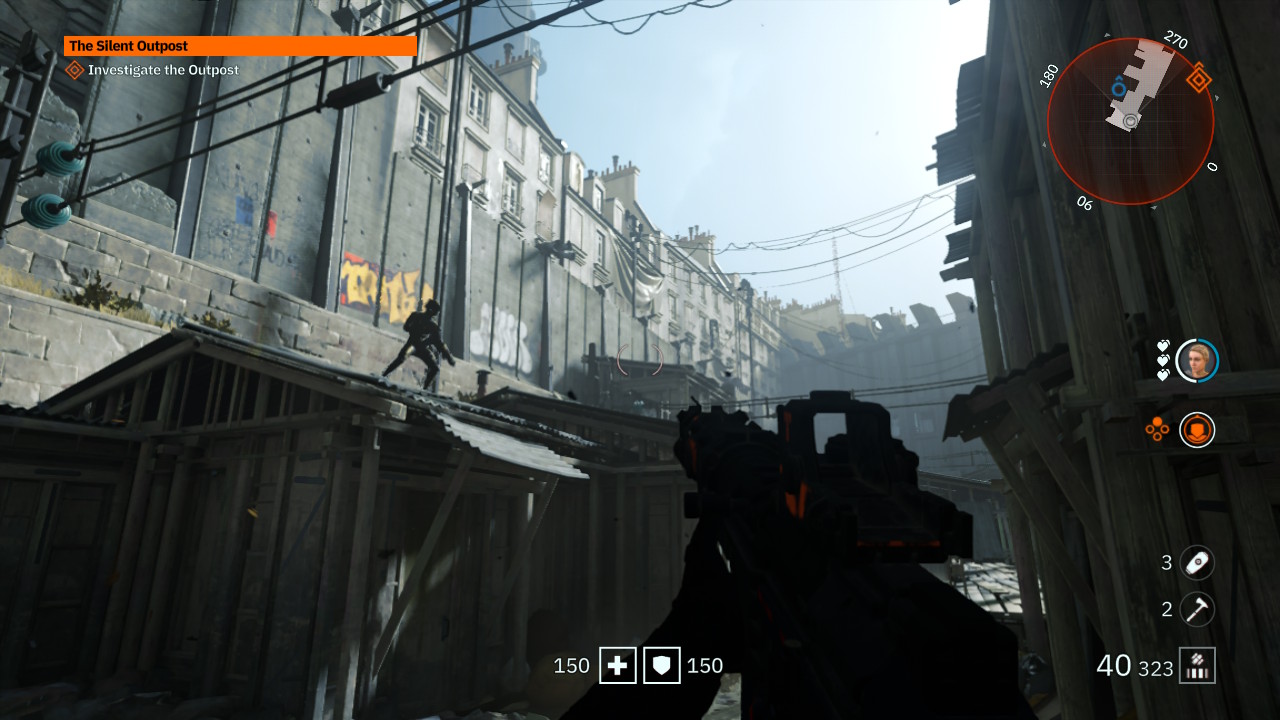 The quests and side quests aren’t always the most interesting, however. There’s the basic “save this person” or “find this item” quest, but the real fun comes in exploring the environments these tasks take place in. There are plenty of puzzles, secrets, and collectibles to find in each region. Players can find floppy disks that need to be decoded in order to gain access to special rooms or areas. There are secret avenues and paths in unsuspecting locations that are full of boxes with silver coins and other special items. Later on in the game, players will unlock weapons that open special boxes or doors that were previously inaccessible. Collectibles like 3D glasses, readables, and cassettes help expand the universe the game exists in and add a little more to the light narrative. Exploring Paris is a great time and a solid fit for the cooperative multiplayer experience this game is going for.
The quests and side quests aren’t always the most interesting, however. There’s the basic “save this person” or “find this item” quest, but the real fun comes in exploring the environments these tasks take place in. There are plenty of puzzles, secrets, and collectibles to find in each region. Players can find floppy disks that need to be decoded in order to gain access to special rooms or areas. There are secret avenues and paths in unsuspecting locations that are full of boxes with silver coins and other special items. Later on in the game, players will unlock weapons that open special boxes or doors that were previously inaccessible. Collectibles like 3D glasses, readables, and cassettes help expand the universe the game exists in and add a little more to the light narrative. Exploring Paris is a great time and a solid fit for the cooperative multiplayer experience this game is going for.
Partners, Peps, and Power Suits
Youngblood is the most fun when it’s played with another person. Complementing each other’s abilities and weapon upgrades, choosing how to address certain enemies and encounters, picking what quests or actions to complete are all part of the cooperative multiplayer process. Saving your partner in the heat of the moment, managing shared lives, and using peps (instant status boosting effects that can be triggered by each player) add an additional level of excitement and collaboration to the multiplayer experience. Solo players will miss out on this excitement when playing alone with the AI. While the AI is competent enough to use peps adequately and revive players in time when they’re down, it’s simply not the same fun as playing with another player.
Cooperative multiplayer is an important aspect of Youngblood and it’s relatively simple to get into a match together with another player on Switch. It’s as easy as choosing to host a game, join a friend, or even join a random through matchmaking. Players can invite or directly join friends from the Bethesda ID tab if there’s an active session. I barely experienced any network issues like lag or dropouts when playing online. One thing I was hoping the Switch version of Youngblood would have is a local multiplayer option in the form of local wireless play. Players can only play together if they’re connected online together which means players won’t be able to continue their Youngblood journey in portable situations like a road trip without access to some sort of internet connection.
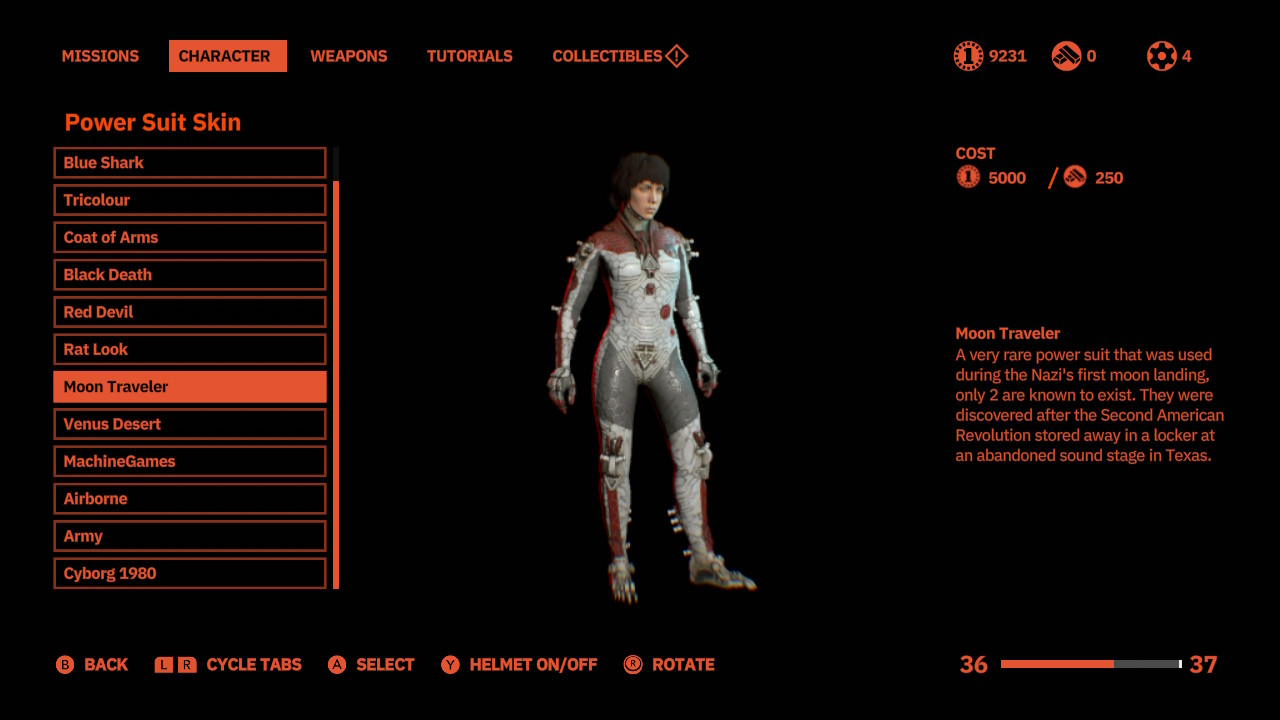 Youngblood features a cosmetic microtransaction system. Players can customize their versions of Soph and Jess with skins and helmets of their choice. Most of the cosmetics can be purchased with silver coins which are earned in-game. There are some that require silver coins and gold bars which are purchased with real money. Player customization and microtransactions kind of go hand in hand in the state of multiplayer games today. I don’t feel like the microtransactions in Youngblood are needlessly invasive, and I never once felt that I missed out on much by using the skin I selected at the beginning of the game.
Youngblood features a cosmetic microtransaction system. Players can customize their versions of Soph and Jess with skins and helmets of their choice. Most of the cosmetics can be purchased with silver coins which are earned in-game. There are some that require silver coins and gold bars which are purchased with real money. Player customization and microtransactions kind of go hand in hand in the state of multiplayer games today. I don’t feel like the microtransactions in Youngblood are needlessly invasive, and I never once felt that I missed out on much by using the skin I selected at the beginning of the game.
Final Thoughts
Wolfenstein: Youngblood is an interesting take on the established rebooted Wolfenstein series. It deviates from elements that make Wolfenstein titles feel meaningfully unique by focusing on co-op multiplayer and basic RPG elements in the form of weapon and skill upgrades. This port is difficult to play at some points as a result of its low framerate and blurry resolution. It’s not a bad game by any means, though. Killing Nazis is fun, and doing it with another person is even better – Youngblood shines when you’re playing with a friend.
As much fun as I had with Youngblood as a whole, however, I feel like this entry lost its identity as a Wolfenstein title in the process. I’m all for the evolution of franchises through risks and new takes, but Youngblood loses more of what makes it unique than it brings to the table.
Wolfenstein: Youngblood is available now at retail and on the Nintendo eShop for $29.99.
Review Copy Provided by Bethesda Softworks
